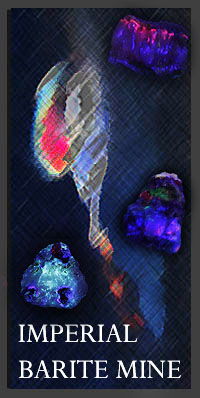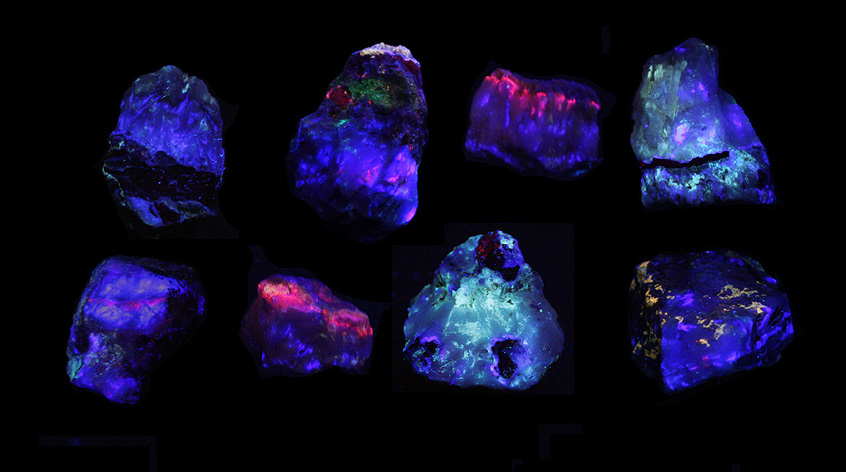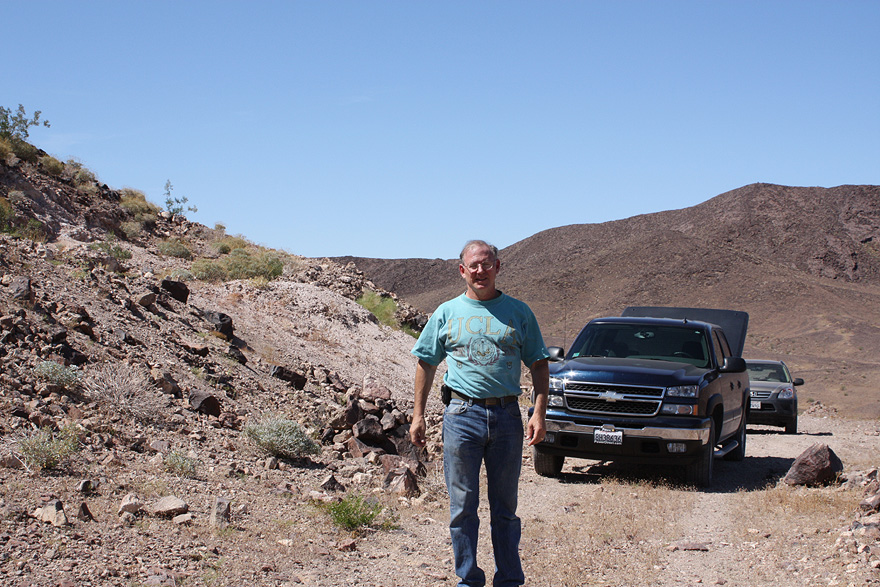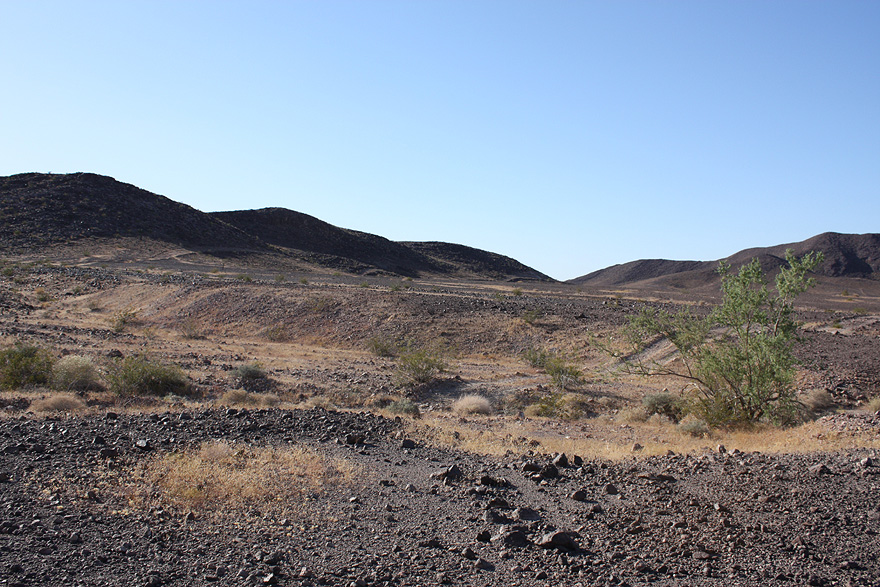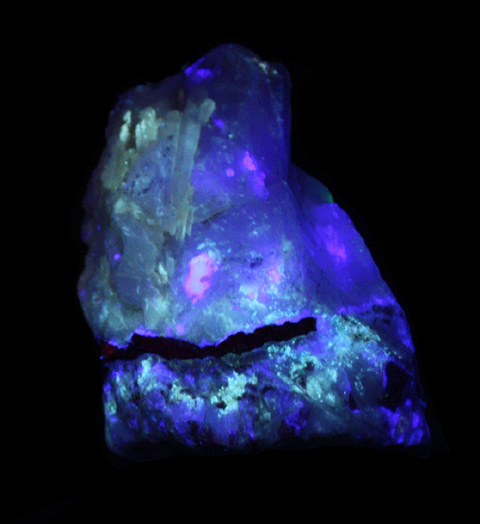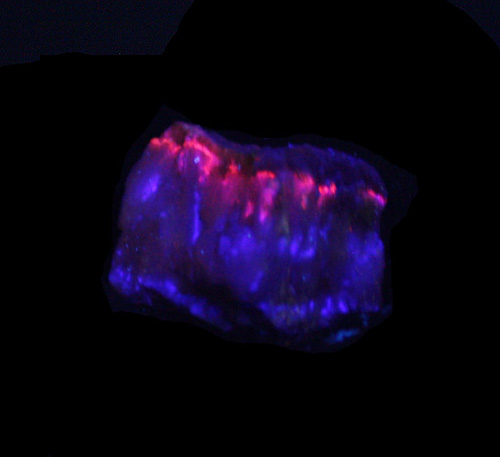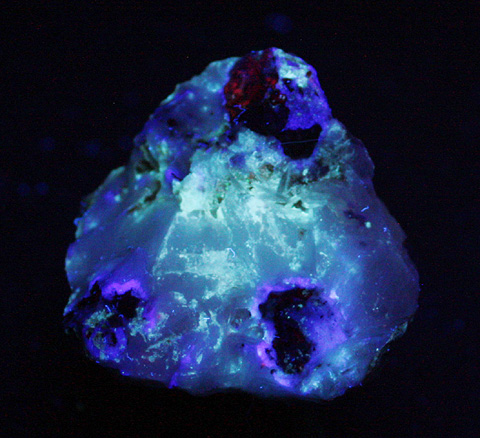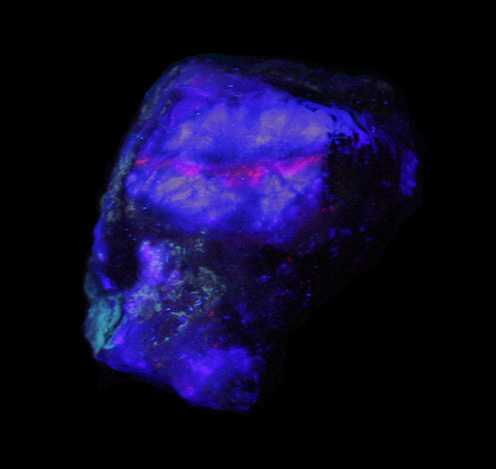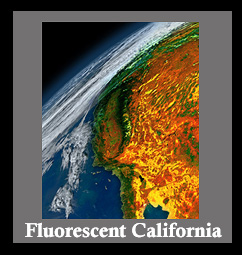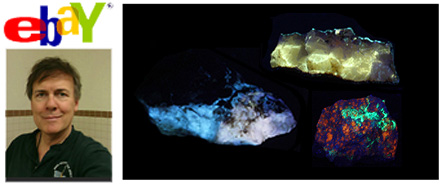|
In May, 2010, FMS member Dave Stuck
directed our fluorescent search to a very small Barite mine location
in the remote Colorado desert south of Blythe in Imperial County,
California. I'm unaware that the mine has any name so I'll call
it "Imperial Barite Mine" in recognition of both the
county and "imperial purple", the high-value purple
dye used in antiquity. There are endless combinations of fluorescent
Barite and Fluorite along with different shades of fluorescent
red, green, white. The Barite fluoresces a pale yellow-cream
color but seems to be mixed in Fluorite. We haven't figured exactly
what all of the pieces are but they're beautiful and unusual.
The red may be Calcite but it does all kinds of surprising things
. . . . more about that later when I get more UV pics.
The image above is the view looking
east from the mine after sunset towards the Palo Verde Mountains.
Beyond them is the Colorado River and Arizona, only 11 miles
away. Mysterious desert geo-glyphs of a giant man and an animal
just like Peru's Nazca lines were discovered north of Blythe
near the river. The human figure is 167 feet across and can only be
seen from the sky. Why did the ancient
inhabitants build it? It's something to ponder when you're at
the Imperial Barite Mine at night under the stars! |
